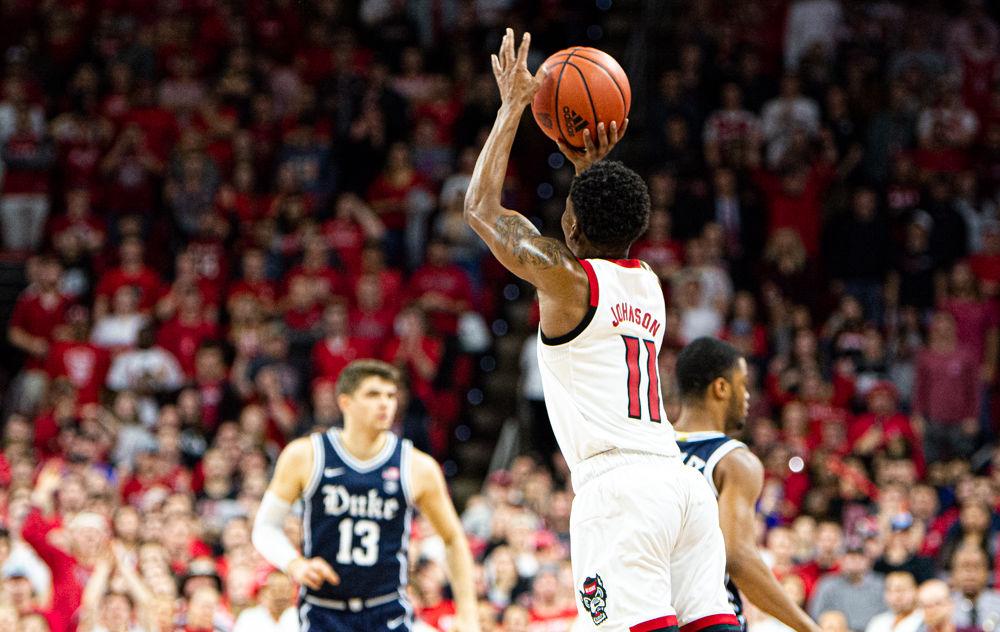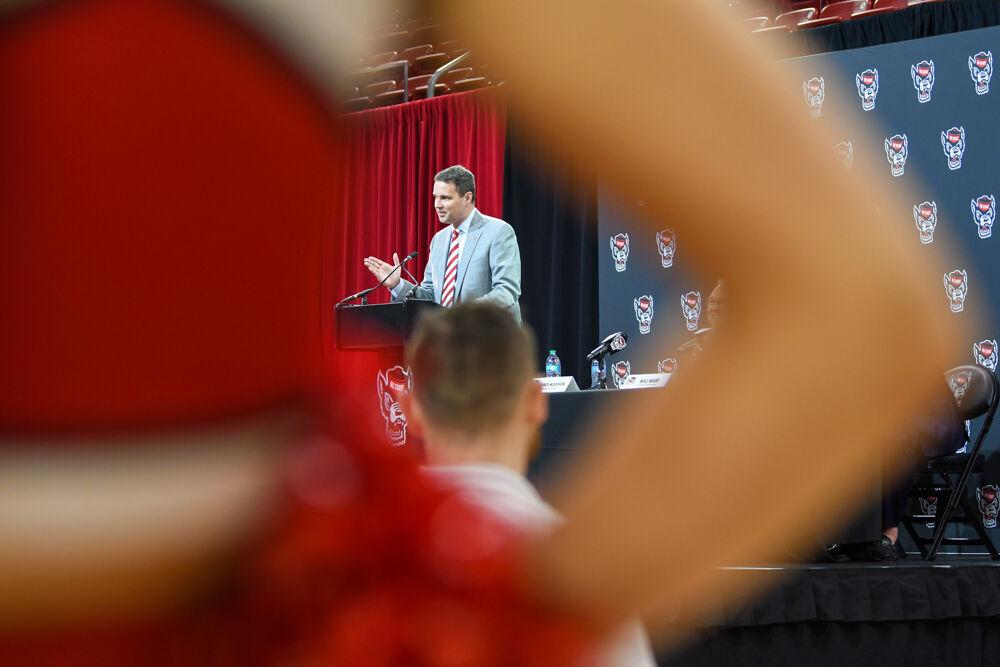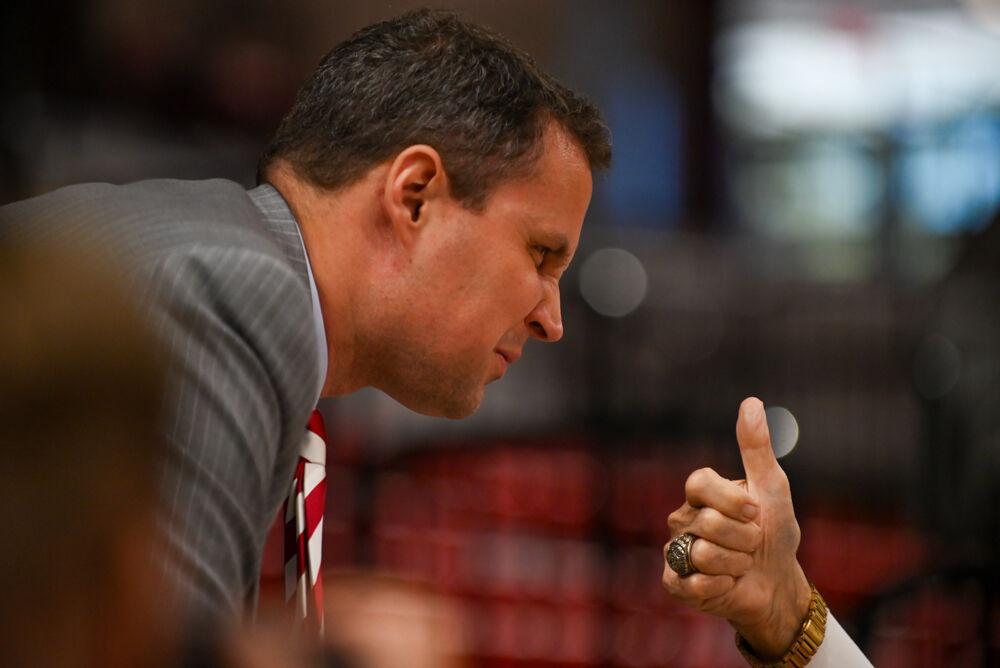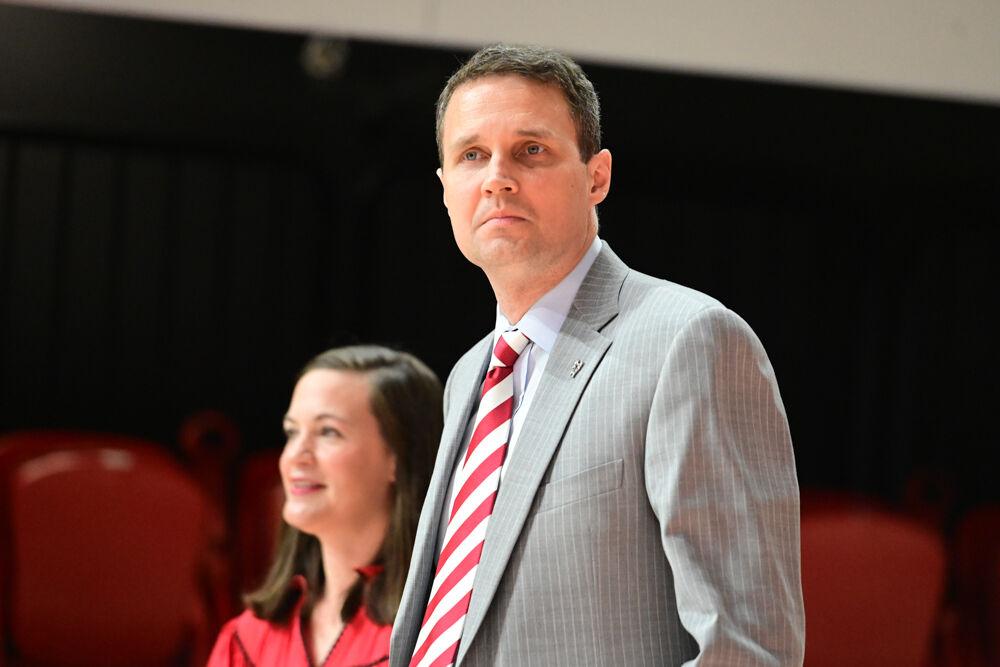In a previous article, I had mentioned that I thought NC State’s senior guard Markell Johnson was an NBA-caliber talent. I had talked about many of his strengths, including his ball-handling, ability to slither past opponents, passing acumen and knack for scoring in bunches. But it’s only fair that some of his weaknesses are addressed, because no player profile would be complete without them, and I’d be doing a disservice without at least mentioning them in passing. Fortunately, there’s a solution to Johnson’s most glaring flaw.
Johnson was one of the more exciting and dynamic players to watch in the ACC this past season. Some might point to shiftiness around defenders, and others point to versatility in transition. But there’s one common denominator here: for Johnson to succeed, the ball has to be moving. And when the game comes to a standstill, it can be hard for Johnson to make a positive contribution. Like at the free throw line, for example.
This past season, Johnson shot a woeful 60.6% from the charity stripe and has shot 64.6% in his college career. Even when he doesn’t shoot poorly, like in the 2018-19 campaign where he shot a reasonable 74.7%, he still finds opportunities for free-throw gaffes, including his heartbreaking blunder against Virginia, where he somehow inadvertently made a free throw he was supposed to miss in hopes for a tip-in.
Clearly there’s a big problem here, and it’s an issue NBA scouts will take note of when looking at Johnson’s game. But there is a way to fix this, and that is, when Johnson steps up to the free-throw line, he takes a few, or maybe several steps back (preferably at the half-court line), takes some deep breaths and knocks his free throws down.
This past season saw Johnson force the rest of college basketball to recognize him as a threat to score from anywhere on the court. In the article I’d previously brought up, I’d mentioned his half-court shots against Wisconsin and UNC-Greensboro. That article is now outdated, as Johnson hit another half-court heave against at the time No. 6 Duke.
That’s three half-court makes on what I believe to be three half-court attempts last season. I’m not a statistician, and I certainly don’t plan to major in statistics either, but 3-for-3 equates to about 100% from half court. And if my math is correct, 100% is a little bit higher than 64.6%.
Of course, there are going to be people that say three attempts is too small a sample size from which to extrapolate any data. This is a reasonable take, and I have to say that I recognize the merit in saying that. Basketball players, no matter how sweet a stroke they may have, are bound to miss free throws from time to time. Even Steve Nash, the hero of my childhood, ‘only’ has a free-throw percentage of 90.4, and he’s the best free-throw shooter in NBA history (unless Steph Curry continues the pace he’s currently at). And so while I feel strongly enough about Johnson’s ability to make half-court shots that I believe he should shoot from that range when he gets free throws, I recognize that he probably won’t shoot 100% from out there. That’s why I’m fully prepared for Johnson to shoot about 95% or maybe 94% from the free-throw line instead. Even so, Johnson would eclipse even the best free-throw shooters in the game — and yes, that even includes Nash and Curry.
New ideas when they’re first created are ridiculed and often mocked. Copernicus when he proposed a heliocentric solar system, Tesla when he devised alternating current and the masterminds behind the invention of Crocs, were met with opposition by people who favored a Ptolemaic geocentric universe, Edison’s direct current and shoes that didn’t have holes in them, even if all shoes technically have a hole to put your feet through anyway.
The same is true in sport, and basketball is no different. Basketball in its infancy lacked some of the basic maneuvers found in today’s game, and in the early part of the 20th century, you’d be hard-pressed to find basketball players who could even dribble; instead, they relied on slow chest passes for movement. 100 years later, players like Allen Iverson could not only dribble from one end of the court to the other, but also score without feeling the need to pass. Kareem Abdul-Jabbar (Lew Alcindor at the time) and NC State’s own David Thompson were some of the game’s earliest dunkers, but weren’t allowed to in college due to the NCAA ban on dunking at the time. Needless to say, we currently live in an age of dunk contests, Zion Williamson and Vince Carter career-ending posters.
Yet even today, the prevailing notion in basketball circles is that it’s preferable to take shots inside the paint over shots from outside. But players like Steph Curry have already dispelled the myth that three-point shots aren’t preferable to midrange shots or even layups. Those same basketball circles say shots closer to the basket are easier to make and yet players like Johnson have proved that it simply isn’t true and that at least for him, it’s easier to knock it down from 45 feet than from 10.
Markell Johnson is listed as a fringe NBA prospect at best; he isn’t listed in ESPN’s best available players for the 2020 NBA draft or Tankathon’s 2020 NBA Draft Board, and his free-throw shooting might be a big reason why. Up until now, Johnson has been taking free throws the conventional way, from 10 feet from the basket. But tried and true thinking can be proven untrue, and it has certainly failed Johnson more or less up to this point. For Johnson to be drafted, he may have to turn to some unconventional techniques to quell worries about his free throws.
In order for Johnson to progress with his free throws, he’ll have to take one step forward, and two, maybe even more, I’d say around 30, steps back.













